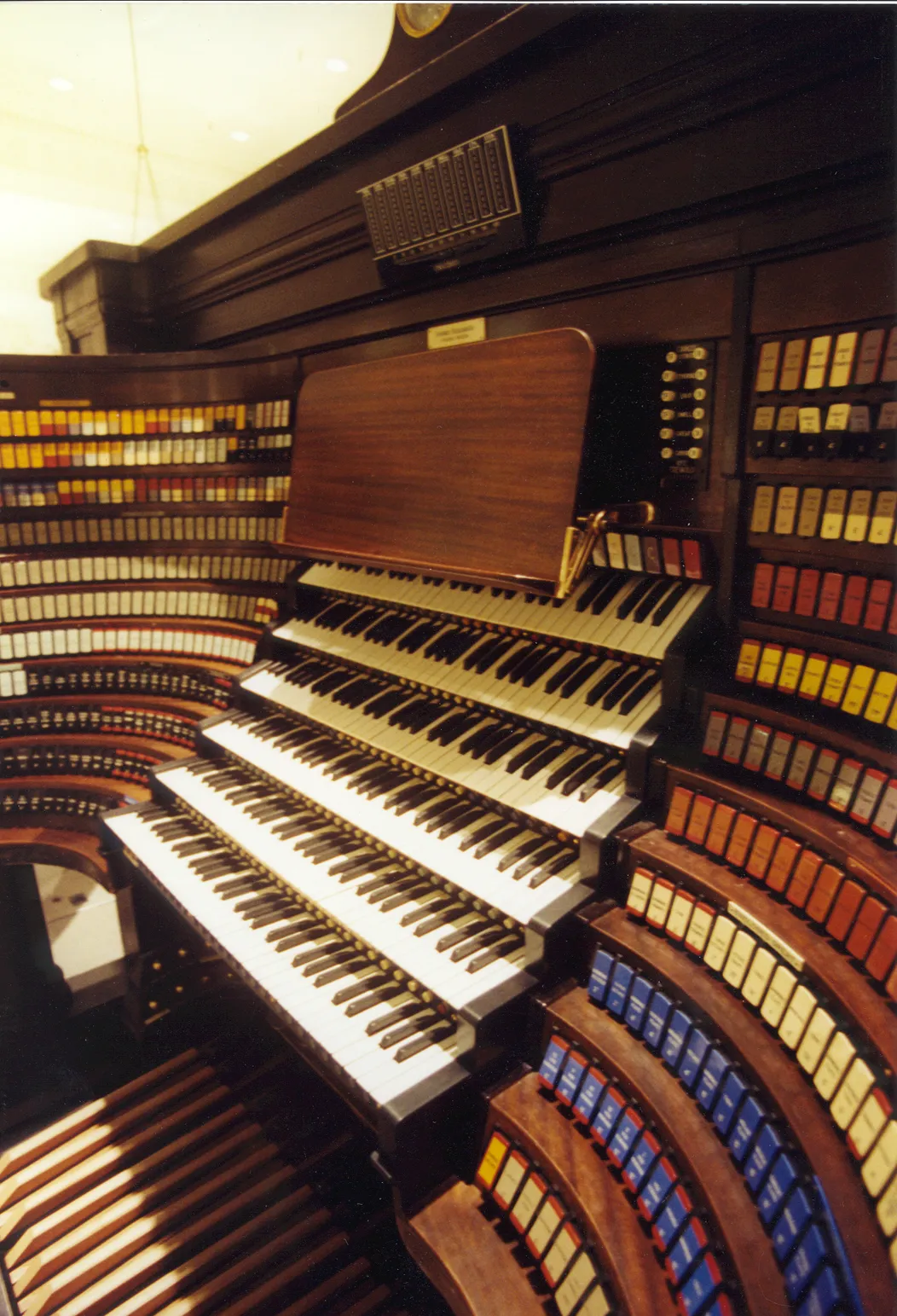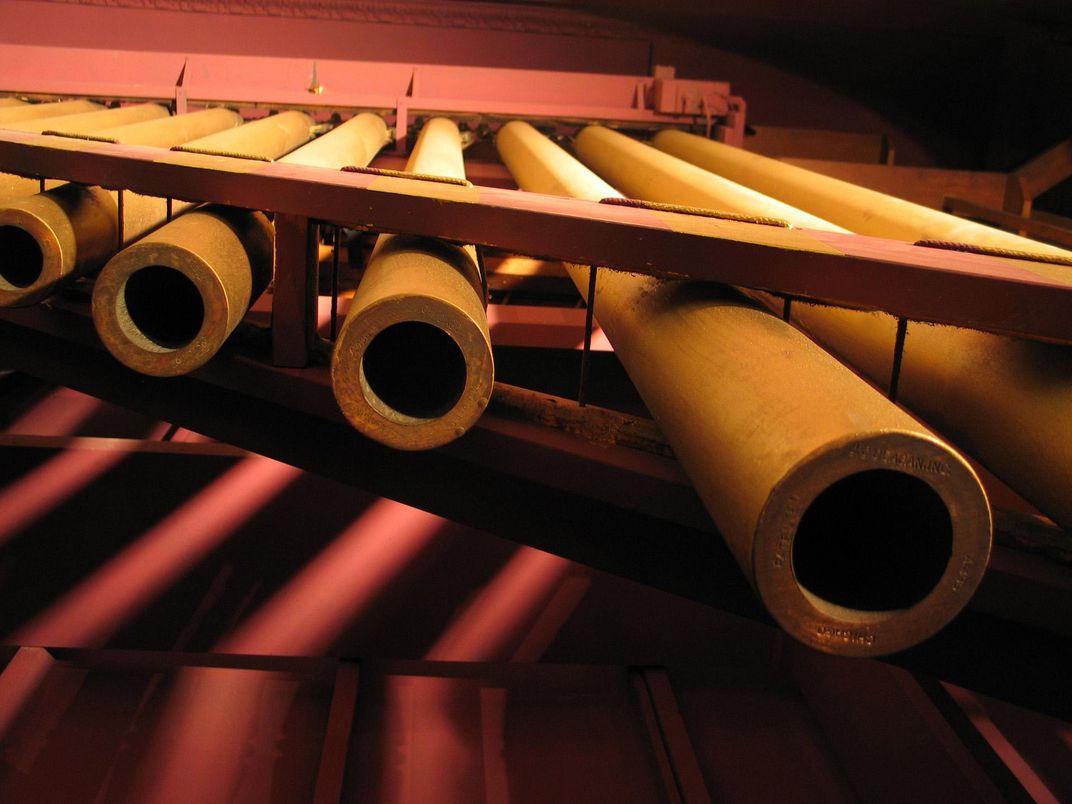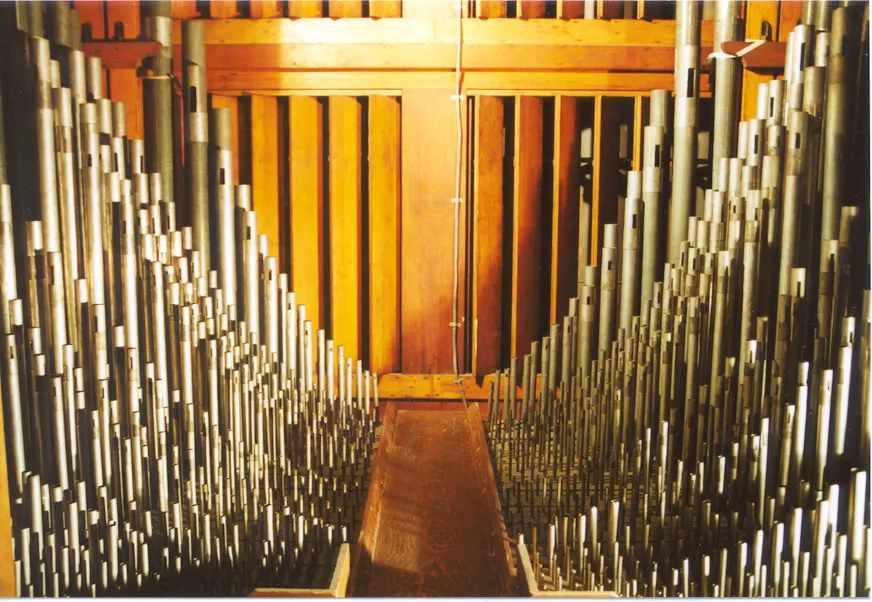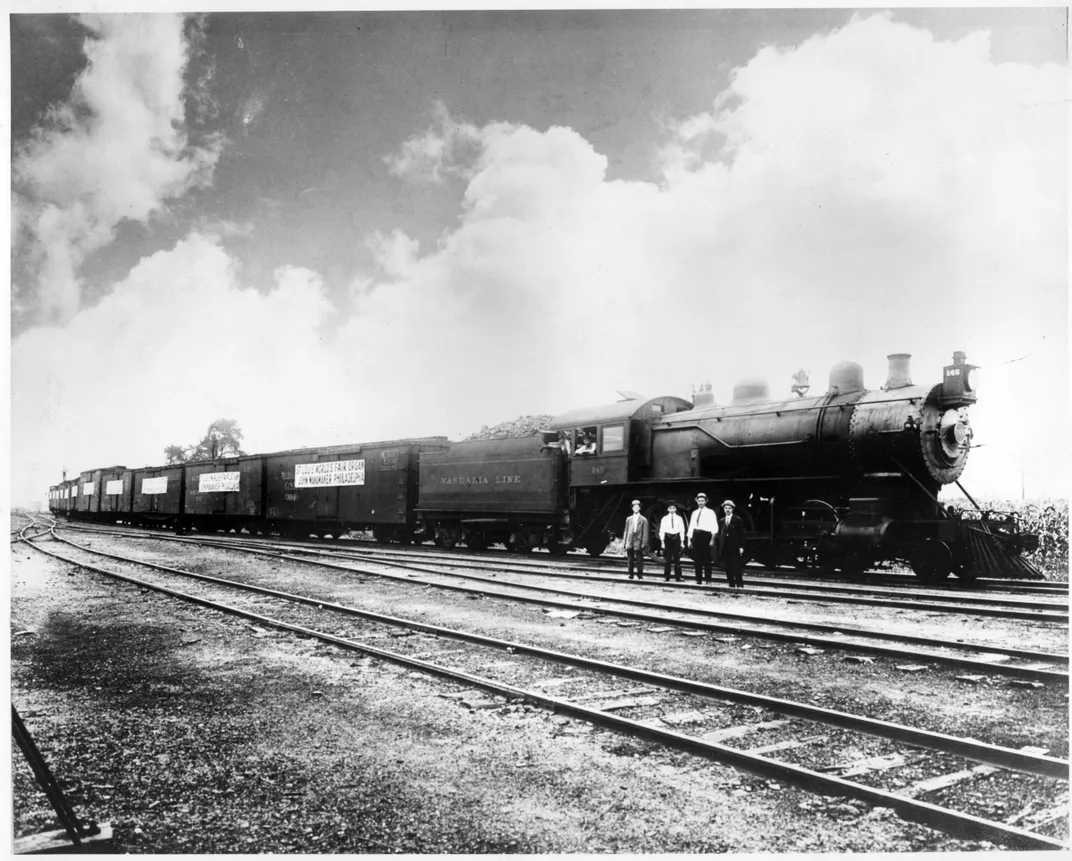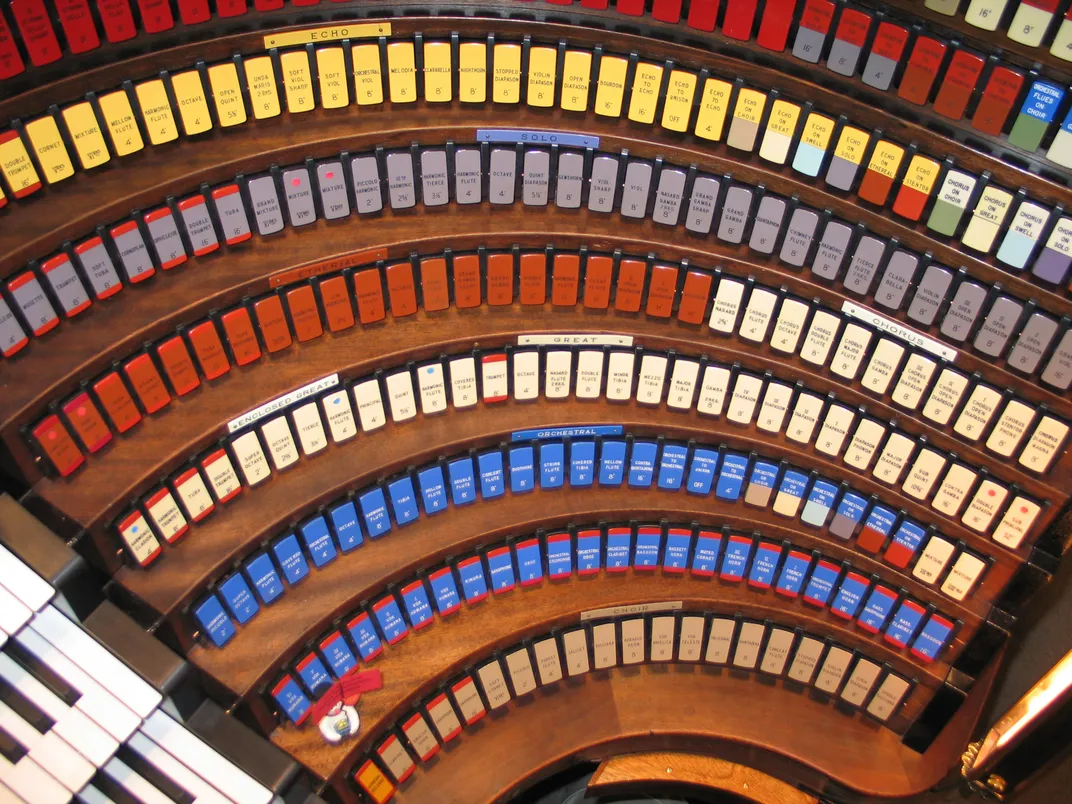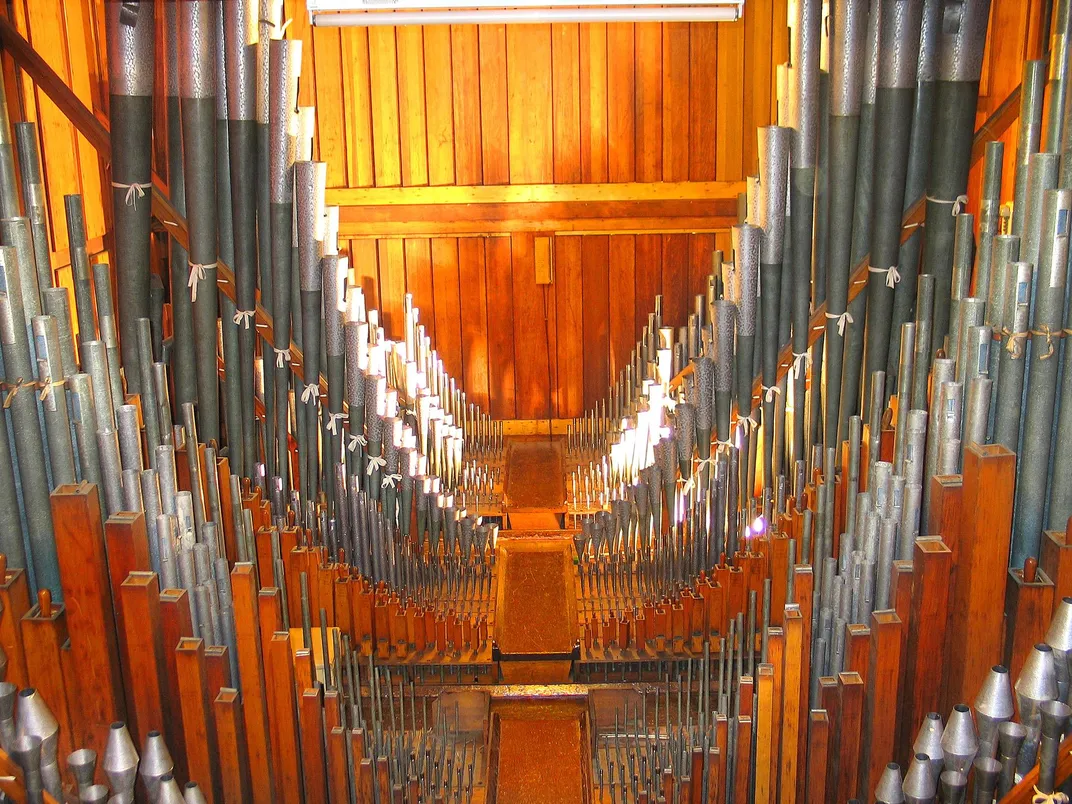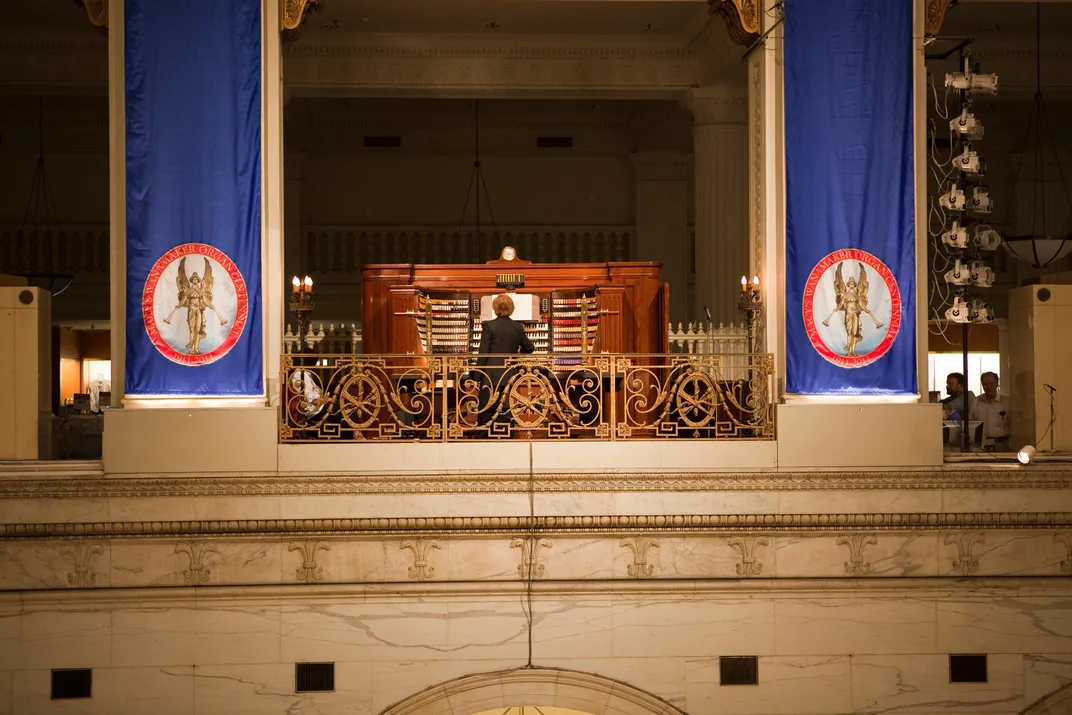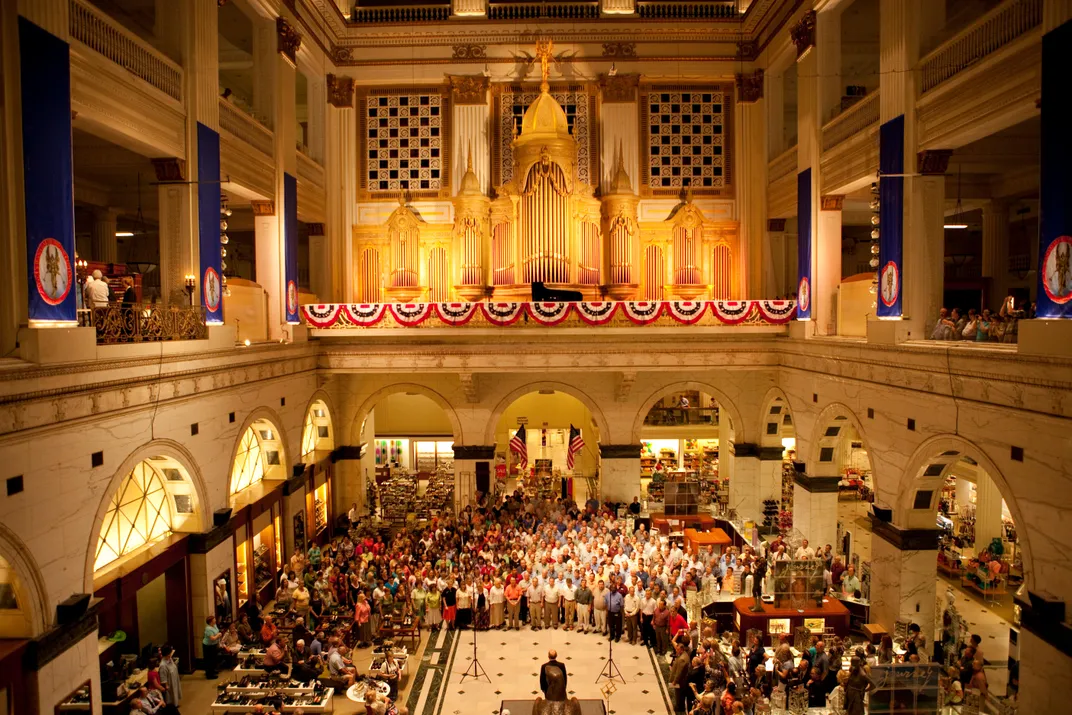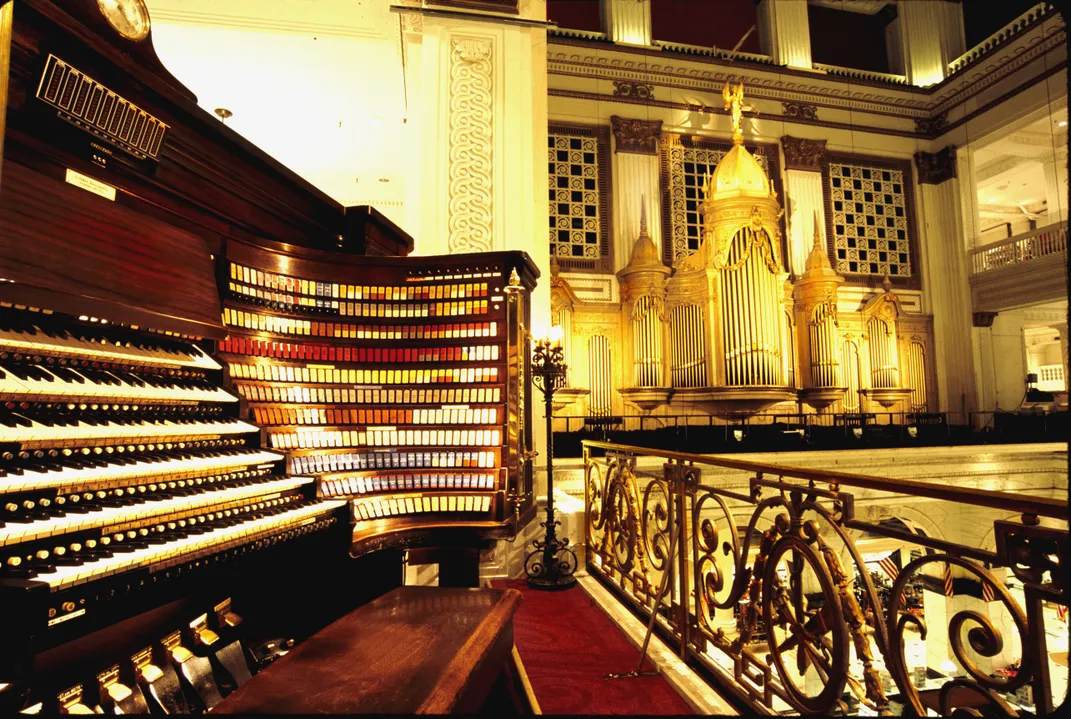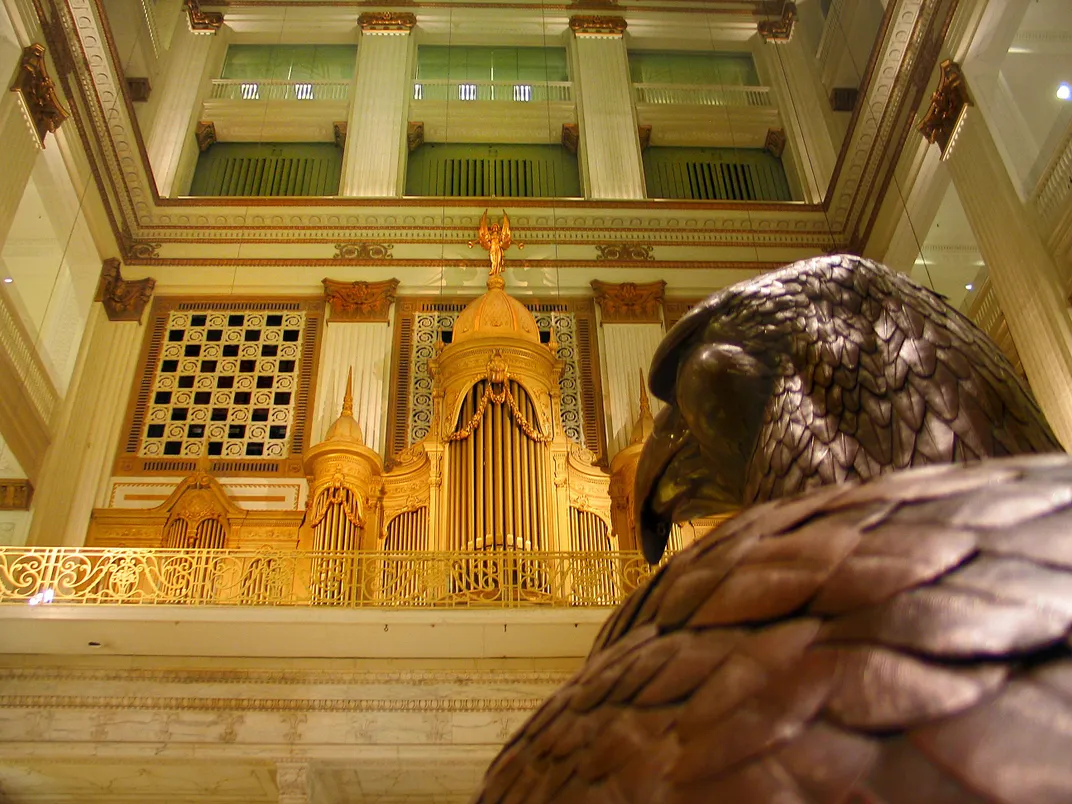The Sound and Fury of Philadelphia’s Wanamaker Organ
Get blown away listening to the largest operating pipe organ in the world
Philadelphia is known as the birthplace of independence and gooey cheesesteaks, but for some, the Wanamaker Organ defines the City of Brotherly Love. The 111-year-old organ at Macy’s Center City Philadelphia is a sight to behold: Seven stories tall, weighing 287 tons and containing 28,750 pipes, it's the world’s largest playable instrument. The organ is grand, powerful and capable of room-shaking sound, but as Ray Biswanger, executive director of the non-profit Friends of the Wanamaker Organ, explains, it also rewards a close listen. “A lot of people are surprised that the organ can have subtlety, nuance, expression, lyricism … and that you can play it like an orchestra,” he says.
The organ debuted in 1904 at the Louisiana Purchase Exposition. Designed by George Audsley and built by the Los Angeles Art Organ Company, the organ made history as the largest pipe organ that had ever been built. Visitors marveled at its size and power, with the Los Angeles Times reporting that “heavy chords vibrated through the immense room, causing little thrills to creep up and down the spines of the listeners.” After the fair, the organ’s owners planned to move the instrument to a convention hall in Kansas City, but the deal fell through and the organ sat in a warehouse for five years.
In 1909, John Wanamaker was in the midst of expanding his famed Wanamaker department store in downtown Philadelphia and wanted something grandiose to christen his new 150-foot high grand court in the center of the store. At the suggestion of his son, Rodman, Wanamaker sent an organ technician to check out the Louisiana Purchase Exposition Organ, still languishing in the warehouse. After the technician’s report, Wanamaker decided that the world’s largest playable organ was exactly what he was looking for, and he purchased it for a reported “next to nothing.” The organ was loaded piece-by-piece onto 13 freight cars and shipped to Philadelphia, where it was officially dedicated in June 1911. Six months later, John Wanamaker opened his new store to the public, with none other than President William Howard Taft in attendance.
While the elder Wanamaker was the more renowned businessman, it was his son Rodman who believed that the arts could enhance the overall appeal of the store. “He felt that music should be part of people’s daily lives and that it made people happier, not just his shoppers but his employees as well. [Rodman] felt that if people had a song in their heart, it would enrich the human experience,” says Biswanger.
The younger Wanamaker, who eventually took over his father's business, expanded the organ over the years by adding over 18,000 more pipes, making the organ larger, more complex and louder. He regularly commissioned organ concerts in the store’s grand court, bringing in famous European organists (including Leopold Stokowski, who later conducted music for the Disney movie Fantasia) for performances that “really did make music history,” according to Biswanger.
The Wanamaker family trust sold their store in 1974 and Macy's took over the building in 2005, but the organ remains a part of the store’s daily life. Grand court organist Peter Richard Conte (only the fourth in the organ’s history) performs daily recitals, mixing old classics with new favorites. The Friends of the Wanamaker Organ also puts on special concerts throughout the year, including the annual Christmas in Grand Tradition concert.
Over the years, Macy’s has invested in constant restorations and refurbishments for the organ. Conte told NPR last year that the restorations have made the organ “probably the best it's ever sounded in its over a 100-year history.” And while Philadelphia might be full of history and culinary delights, there is only one place where you can shop for shoes and leave with a song in your heart.

